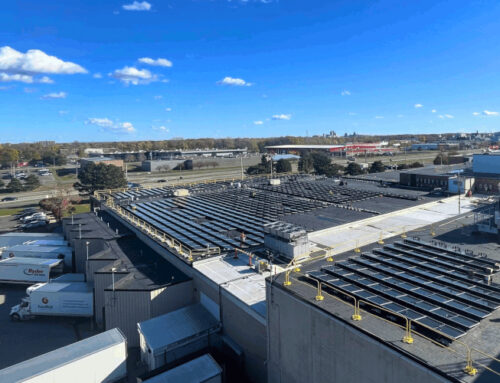Amazon’s Robotaxi Unit Launches In San Francisco Without Steering Wheels—Or Fees
November 18, 2025
Zoox, Amazon’s self-driving tech company, has begun offering rides to the public in its purpose-built robotaxis in San Francisco, following a similar launch in Las Vegas. For now, rides in the electric microvan, which has no steering, mirrors or pedals, are free, but commercial service will start next year if Zoox wins the first federal waiver to operate such vehicles.
U.S. auto safety rules require carmakers to install standard controls, as well as windshields and wipers, on human-driven vehicles, but AI-driven cars and trucks don’t need them. Zoox already has permission from the National Highway Traffic Safety Administration to test its vehicle – which looks like a small transit train car – on public roads and give free rides. A so-called Part 555 exemption will allow it to someday operate thousands of them in a commercial fleet, cofounder and CTO Jesse Levinson told Forbes.
“It will be next year,” he said. “NHTSA and Zoox agreed to pursue this pathway for our unique vehicle architecture that doesn’t have traditional manual controls. We started with the research exemption, which allows us to provide rides without charging a fare. The next step is the commercial exemption, which allows us to charge a fare and release up to 2,500 vehicles a year under that.”
For the latest in cleantech and sustainability news, sign up here for our Current Climate newsletter.
With Waymo quickly expanding its robotaxi service to more cities, Elon Musk claiming Tesla is close to doing the same – despite evidence to the contrary – and Uber, Volkswagen, Rivian, Nuro, Lucid, Mobileye and other companies racing to the market, federal and state regulators are hard-pressed to keep up. If it wins approval, Zoox’s robotaxi will be a step beyond what industry leader Waymo has accomplished, though it will likely be followed quickly by multiple competitors.
Musk this month said Tesla would start producing its Cybercab model in Texas as an autonomous vehicle without conventional controls by April 2026. But the company hasn’t yet requested a waiver for it from NHTSA under the current Federal Motor Vehicle Safety Standards, the agency told Forbes.
Zoox’s public program in San Francisco, like the one it already operates in Las Vegas, is an “early rider initiative” intended to help the company before it scales up the commercial service there. It’s been testing in the city since 2017. Unlike in Las Vegas, where the autonomous cabs ferry passengers to fixed drop-off and pickup locations for now, the service in San Francisco will operate on a “point to point” basis, Levinson said.
“It’s a big deal for us, in addition to it being our second city,” he said. “In Las Vegas, we’re starting off focused on major pickup and drop-off locations, like major hotels, major entertainment destinations. In San Francisco, you can just enter an address, pick a point of interest, or even drop a pin on the map, and we’ll come get you as close as possible to exactly where you want to get picked up, and we’ll take you to exactly where you want to go, typically within a block or so.”
Founded in 2014 by Levinson and Tim Kentley-Klay, who left in 2018, Zoox is based in Foster City, California, and builds its robotaxis at a 220,000-square-foot factory in nearby Hayward. It currently operates a fleet of 50 of the vehicles but is preparing to scale up quickly over the next year. The small bidirectional robocabs, with sliding train-style doors, are loaded with sensors, including eight laser lidars; 10 radar units; 18 digital cameras; eight microphones (to hear emergency vehicles, for example); and four thermal cameras that can detect humans and animals in murky weather, dim lighting or even through steam and fog.
More From Forbes
Related Post




